
Automotive
Real-time quantification of diverse volatiles found in a wide variety of automotive industry applications.
SIFT-MS quantifies diverse volatiles found in a wide variety of automotive industry applications in real-time with very high selectivity and sensitivity.
Volatile organic compounds (VOCs) and inorganic gases are emitted from diverse automotive components, assembled motor vehicle cabins and as combustion by-products from motor vehicles. Some emissions are highly toxic (including the carcinogens benzene and formaldehyde), some have nuisance value (e.g. causing sensitization) but most are contributors to smog.
Rapid, on-site vehicle interior air quality (VIAQ) testing
Vehicle interior air quality (VIAQ) has been of concern to both car manufacturers and the public for some time, along with the possible health impact of this “new car smell”. This has led to several countries imposing concentration limits on a range of VOCs.
Currently, these standards are based around two traditional laboratory-based analytical methods: gas chromatography mass spectrometry (GC/MS) and high-performance liquid chromatography (HPLC). These methods are expensive, have slow sample turnaround, require trained laboratory technicians and are incompatible with rapid testing on the production line or in the parking lot.
The high-speed, sensitive analysis provided by SIFT-MS makes it ideally suited to testing of chemically diverse VOCs in the vehicle interior air quality application.
SIFT-MS eliminates expensive sampling consumables, sample preparation prior to analysis and delays arising from laboratory-based analyses. Syft Technologies’ instruments are also extremely easy to use and are designed for industrial applications. Combined, these benefits provide instant feedback on the acceptability of every vehicle coming off the production line.
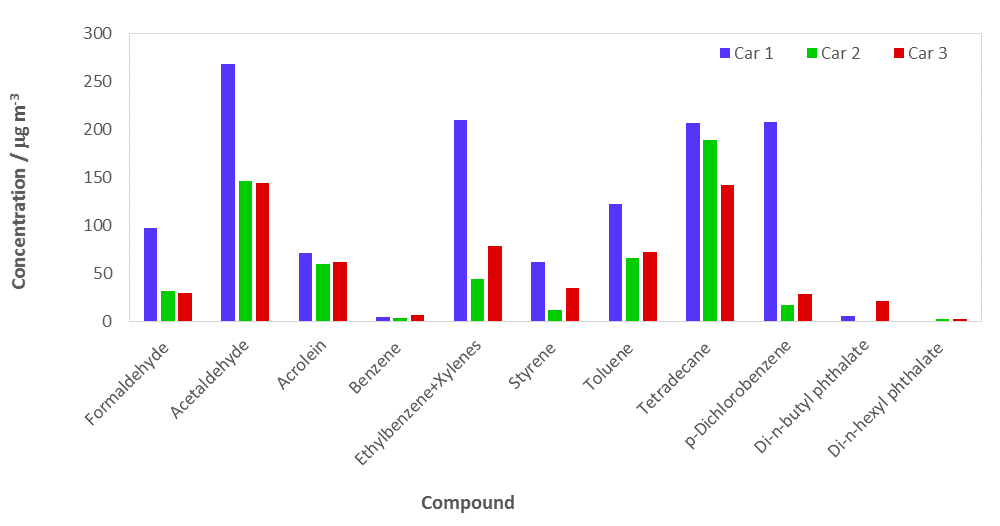
Aldehyde and VOC emissions from three newly imported cars (same manufacturer; three different models). Data are the means of duplicate measurements and have had the background subtracted (ambient air).
Learn more about SIFT-MS capabilities in Automotive
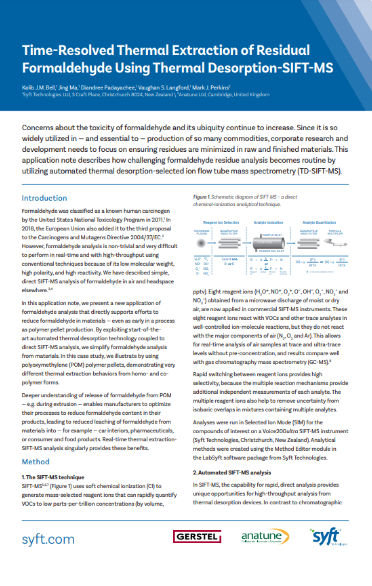

Direct MS Simplifies Analysis of Challenging Compounds
This webcast focuses on case studies that demonstrate simple analysis of chromatographically challenging compounds. Formaldehyde receives special attention, as it is important across a wide range of industries (from environmental to pharmaceutical testing).
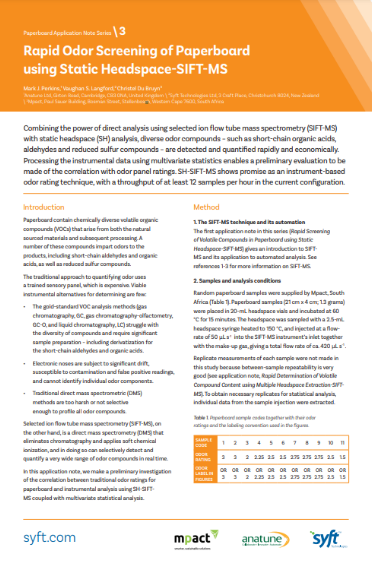
Paperboard Volatiles 3 - Odor Rating
SH-SIFT-MS provides an instrument-based odor rating technique for the analysis of diverse odor compounds – such as short-chain organic acids, aldehydes and reduced sulfur compounds. Throughput of at least 12 samples per hour can be achieved using this method.
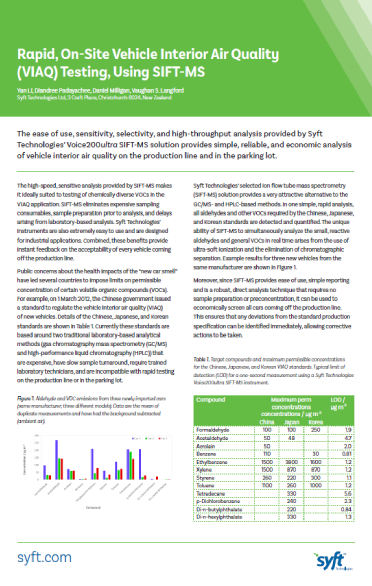
Rapid, On-Site Vehicle Interior Air Quality (VIAQ) Testing, Using SIFT-MS
The ease of use, sensitivity, selectivity, and high-throughput capabilities of SIFT-MS provide simple, reliable, and economic analysis of vehicle interior air quality on the production line and in the parking lot. Learn more about how SIFT-MS revolutionizes VIAQ testing within the automotive industry.

Comprehensive, High-Throughput Analysis of Emissions from Automotive Cabin Components, Using SIFT-MS
SIFT-MS provides an ideal instrument for certifying conformance of every batch of automotive product across diverse compound classes, including aldehydes, phthalates, aromatics, chlorinated organics, and organotin compounds. SIFT-MS eliminates expensive sampling consumables, minimizes sample preparation prior to analysis, and facilitates rapid feedback on product quality.

Analysis of Vehicle Interior Air Quality (VIAQ) using SIFT-MS
SIFT-MS provides one simple, rapid analysis of all aldehydes and other VOCs required by the Chinese, Japanese, and Korean standards for vehicle interior air quality (VIAQ). It can be used to economically screen all cars coming off the production line because of its real-time detection capabilities, ease of use, and simple reporting.
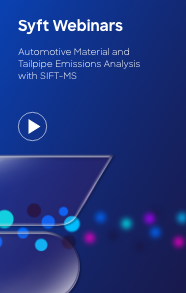
Automotive Material and Tailpipe Emissions Analysis with SIFT-MS
In this webinar, we describe various automotive applications of SIFT-MS including exhaust gas analysis, emission screening of synthetic and natural vehicle components, and leak detection. Implementations of SIFT-MS instrumentation range from R&D through to the process line, enabling timely decisions to be made from new product development right through to production.
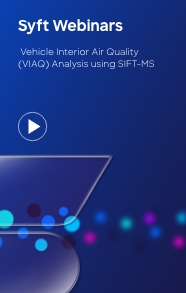
Vehicle Interior Air Quality (VIAQ) Analysis using SIFT-MS
This webinar outlines the benefits that make SIFT-MS the ideal instrument for product emission testing applications, from component screening through to complete vehicle interior air quality testing on the production line. Case studies will be used to illustrate how SIFT-MS has been applied to a range of emissions testing applications.
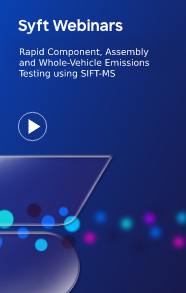
Rapid Component, Assembly and Whole-Vehicle Emissions Testing using SIFT-MS
This webinar describes the benefits that make it the ideal instrument for product emission testing applications. Dr. Holzwarth, Senior Manager VIAQ VOC Odor, imat-uve, presents examples that illustrate how SIFT-MS has been applied to a range of emissions testing applications in the imat-uve laboratory. imat-uve evaluations include comparative studies that parallel the ISO 12219-4 emission testing chamber standard.

Automotive Industry Solutions
SIFT-MS represents a breakthrough in the detection, quantification, and tracing of gaseous emissions for the automotive industry. This brochure outlines several SIFT-MS-based vehicle and component testing solutions provided by Syft Technologies.
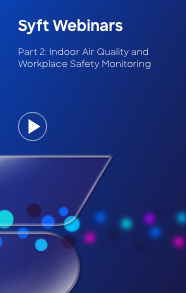
Part 2: Indoor Air Quality and Workplace Safety Monitoring
In this webinar, we discuss applications in these areas:
- Real-time IAQ monitoring
- Formaldehyde adsorption by furnishings
- Breath-based monitoring of exposure to volatile compounds
- Protection of frontline workers from fumigation chemicals
- Vehicle interior air quality analysis
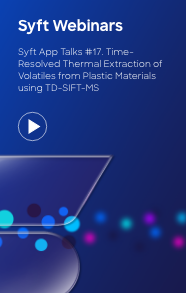
Syft App Talks #17. Time-Resolved Thermal Extraction of Volatiles from Plastic Materials using TD-SIFT-MS
In this presentation, examples of real-time thermal extraction and analysis of various plastic materials using TD-SIFT-MS are demonstrated, and its application to product development and processing environments are discussed. Direct, continuous analysis of formaldehyde from polyoxymethylene (POM) is of particular significance.
Syft Tracer: The Next Generation of Volatile Impurities Analysis for Enhanced Workflows
This app note introduces the next generation of SIFT-MS, Syft TracerTM, which launched at Pittcon 2023. It revolutionizes volatile impurities analysis workflows through unparalleled speed, performance stability, and reproducibility. Learn about how this innovation to real-time trace gas detection outpaces chromatography-based methods in the analysis of challenging analytes such as formaldehyde in a PEG excipient.
Recent developments and applications of selected ion flow tube mass spectrometry (SIFT‐MS)
SIFT‐MS is now recognized as the most versatile analytical technique for the identification and quantification of trace gases down to the parts‐per‐trillion by volume, pptv, range. This statement is supported by the wide reach of its applications, from real‐time analysis, obviating sample collection of very humid exhaled breath, to its adoption in industrial scenarios for air quality monitoring. This review touches on the recent extensions to the underpinning ion chemistry kinetics library and the alternative challenge of using nitrogen carrier gas instead of helium.
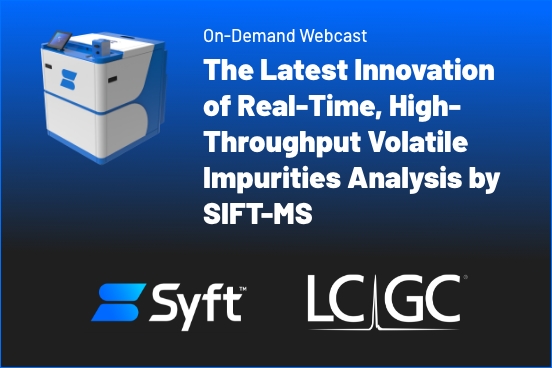
The Latest Innovation of Real-Time, High-Throughput Volatile Impurities Analysis by SIFT-MS
Join us for this webinar to learn about Syft Tracer, the latest advancement of real-time, trace gas analysis by SIFT-MS which launched at Pittcon 2023. Hear how the recent product innovations unlock analytical bottlenecks and enable faster decisions to be made in critical process steps.
Syft Tracer Brochure
Syft TracerTM is the latest advancement in real-time, direct injection mass spectrometry (MS) built to solve the most difficult analytical challenges faced within a variety of industries and applications. This advancement to SIFT-MS delivers trace-level detection sensitivity, unparalleled performance stability, superior selectivity, and highly reproducible, quantitative data. Syft Tracer is optimized for high-throughput environments where continuous operation is the standard. Never miss a product or environmental contamination event again.
Revolutionary Productivity For Volatile Residue and Impurity Analysis
This application note describes a scenario in which Syft TracerTM analyzed the same amount of samples in 9 hours that it took 5 chromatographic systems 24 hours to complete and still had capacity to spare. Next-gen SIFT-MS provides rapid, chromatography-free workflows which revolutionize volatile compound analysis.
Headspace-SIFT-MS: Flexibility that Revolutionizes Workflows for Diverse Samples
The characteristic flexibility, stability, high throughput, and fast time to data of the Syft Tracer next-gen SIFT-MS instrument apply across multiple headspace approaches for diverse matrices. This application note briefly summarizes the use of (1) dissolution, (2) multiple headspace extraction (MHE), and (3) the method of standard additions, then provides a guide for identifying the appropriate headspace approach for various matrices.
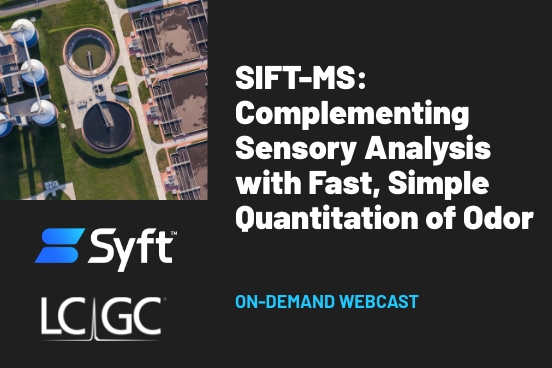
Fast, Simple Quantitation of Odors by SIFT-MS
In this on-demand webinar, Michael McGinley, President, St. Croix Sensory, describes how SIFT-MS has advanced their ability to rapidly perform odor analysis. A variety of SIFT-MS-based odor applications correlated with conventional sensory panel assessment are presented. Learn how Syft is Simply. Faster. for the analysis of odor compounds.
Improved MHE-SIFT-MS Workflows - Concentration Independent MHE Calibration
This application note investigates concentration dependence of MHE calibration in sample matrix. Across the full range of analytes investigated in this study, MHE calibration holds for at least one order of magnitude change in sample concentration. For analytes in the C7–C9 range, the MHE calibration applies over two orders of magnitude analyte concentration. These results mean that the MHE workflow can be applied to a wider range of samples in the matrix, further reducing calibration demand.
Real-Time Roadside SIFT-MS Monitoring: Unreported VOC Emissions from Road Transport
This application note summarizes key SIFT-MS results obtained and conclusions made in a peer reviewed open-access article entitled “Unreported VOC Emissions from Road Transport Including from Electric Vehicles.” Learn how the Wolfson Atmospheric Chemistry Laboratory at the University of York used SIFT-MS for VOC analysis in its platform to experimentally verify – for the first time – that motor vehicle screen wash is a significant unreported source of VOC emissions (especially for ethanol and methanol).
Syft Contributes Real-Time VOC Data to Aeroparts VOC Ozone Converter Bleed Air Study
This video describes the bleed air study led by AeroParts in Oct 2023 to understand the differences in VOC ozone converter performance. VOC ozone converters have the potential for preventing airplane cabin smoke odor fume events. Learn how SIFT-MS enabled this important study by providing real-time VOC analysis of simulated engine bleed air.